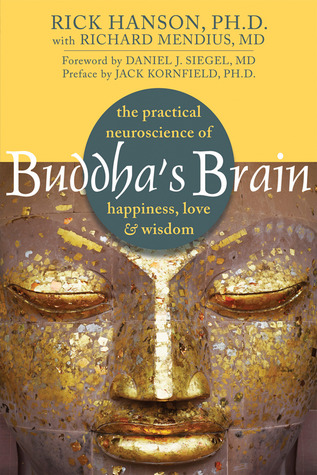More on this book
Community
Kindle Notes & Highlights
by
Rick Hanson
Read between
October 29 - November 10, 2023
Be mindful of automatic categorizations into “us” and “them” and look for ways that “them” is actually “us”; notice whenever you feel threatened, and consider whether there are actually any threats; consciously warm your heart...
This highlight has been truncated due to consecutive passage length restrictions.
Attention is like a spotlight, and what it illuminates streams into your mind and shapes your brain. Consequently, developing greater control over your attention is perhaps the single most powerful way to reshape your brain and thus your mind. You can train and strengthen your attention just like any other mental ability (Jha, Krompinger, and Baime 2007; Tang et al. 2007);
global workspace of consciousness—or in plainer terms, the mental chalkboard. Whatever you call it, it’s a space that holds incoming information, old information retrieved from memory, and mental operations on both.
your brain must routinely update this chalkboard with new information, whether it comes from the environment or from your own mind.
Third, your brain has a built-in desire for stimulation that likely evolved to prod our ancestors to keep seeking food, mates, and other resources.
This dopamine-driven system interacts with another neural system—based in the basal ganglia—that tries to balance the rewards of stimulation-seeking (new food! new mates!) with its risks (exposure to predators, rivals, and other hazards). The basal ganglia are a kind of “stimostat” that registers the stimulation coming through the senses or from within the mind itself. As long as the amount of stimulation remains above a certain threshold, there’s no need to trigger stimulation-seeking. But when stimulation drops below this threshold, the basal ganglia signal your brain to get more now—and you
...more
In terms of its innate effects—distinct from how others react to a person—neurological diversity is much more significant than variations of gender, race, or sexual orientation. If contemplative traditions are to increase the diversity of their practitioners, they need to find more ways to welcome diverse kinds of brains. Further, here in the West, we particularly need to individualize contemplative practices because there is a premium—in busy, “householder” lives—on methods that are targeted, efficient, and effective.
Oxygen is to the nervous system what gasoline is to your car. Although just 2 percent of body weight, your brain uses roughly 20 percent of your oxygen. By taking several deep breaths, you increase oxygen saturation in your blood and thus rev up your brain.
What flows through your attention sculpts your brain. Therefore, controlling your attention may be the single most effective way to shape your brain, and thus your mind. You can train and strengthen attention like any other mental ability; mindfulness is well-controlled attention.
Attention has three aspects to it: keeping information in awareness, updating awareness with new information, and seeking the right amount of stimulation.
There is a natural range of strengths and weaknesses with these three aspects of attention; this is one aspect of neurological diversity. Each person has his or her own profile. It’s compassionate and sensible both to adapt your work, home life, and spiritual practices to your profile, and to improve your attention over time.
Mindfulness brings insight and wisdom—and the best way to increase your mindfulness is through meditation.
Buddhism has identified five key factors for steadying the mind: Applied attention—initial directing of attention to an object, such as the beginning of the breath Sustained attention—staying focused on the object of attention, such as remaining aware of an entire inhalation from beginning to end Rapture—intense interest in the object; sometimes experienced as a rush of blissful sensations Joy—gladdening of the heart that includes happiness, contentment, and tranquility Singleness of mind—unification of awareness in which everything is experienced as a whole; few thoughts; equanimity; a strong
...more
Paradoxically, inviting distractions in encourages them to move out. Dropping the second dart of resistance to them reduces the amount of attention they get.
No matter where you start, you can become better at concentration. It’s like a muscle: when you use it, it gets stronger.
The Buddha offered a kind of road map for contemplative practice: steady the mind, quiet it, bring it to singleness, and concentrate it. We’ll
Mindfulness leads to wisdom, and the best way to increase mindfulness is meditation.
Singleness of mind is probably supported by fast gamma wave synchronization of large areas of the brain. You can encourage this state through the other four factors of concentration, plus whole body awareness, surrendering to the moment, and relaxing the sense of self.
Look into your own experience. When you take things personally—or hunger for approval—what happens? You suffer. When you identify with something as “me” or try to possess something as “mine,” you set yourself up for suffering, since all things are frail and will inevitably pass away. When you stand apart from other people and the world as “I,” you feel separate and vulnerable—and suffer.


